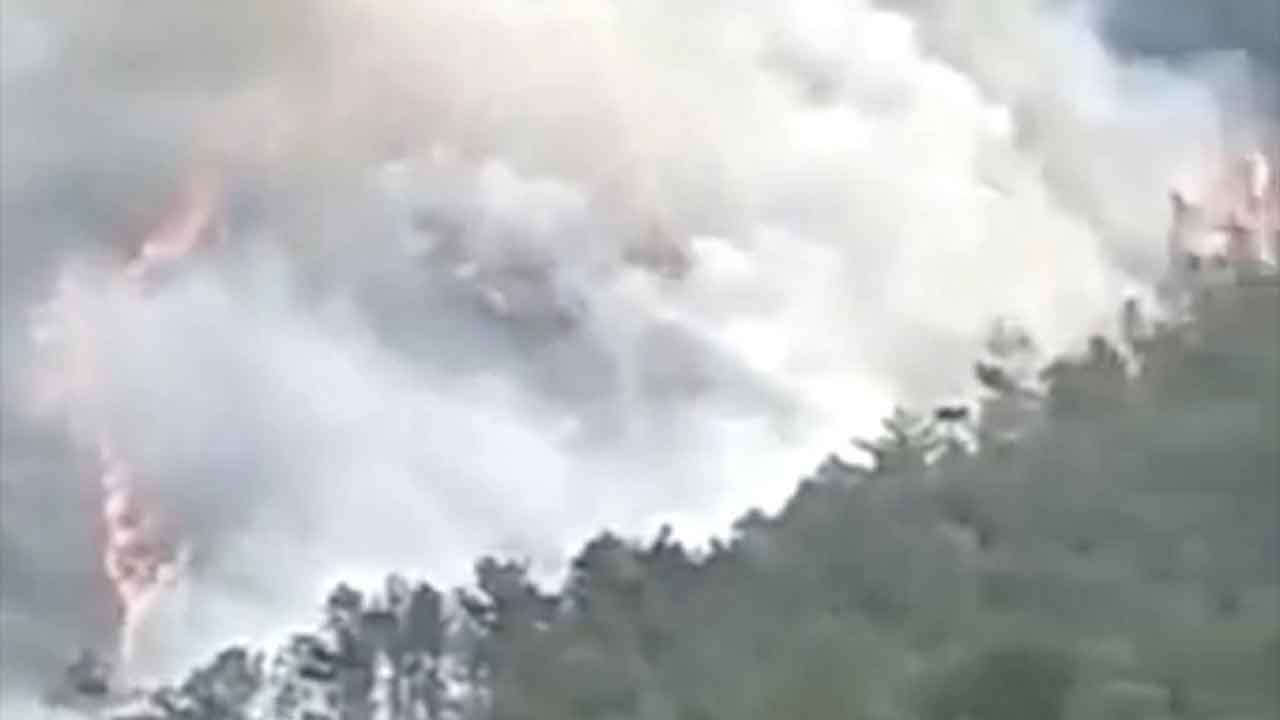Terrifying final moments of crashed passenger jet emerge

Less than a minute of flight data has stumped aviation experts who have been trying to retrace the last minutes of the China Eastern airlines MU5735 flight before it crashed.
The passenger airplane departed from Kunming at 1pm local time (6pm NZDT) on Monday, with 123 passengers and nine crew onboard.
Though it had an expected arrival time of 3.05pm in Guangzhou, the Boeing 737 plane crashed at approximately 2.20pm local time over Wuzhou city, nose diving into a hill and erupting in flames.
After analysing the plane’s flight data taken from its computers and sensors, FlightRadar24 was able to show the plane stabilising during the stable auto-pilot section of the trip.
The flight path monitoring then abruptly drops, the vertical rate increases again, and the aircraft dramatically drops a second time - correlating with a reported altitude drop from 29,100 feet to 9075 feet in two minutes and 15 seconds, 10-20 seconds of stabilising, and another drop.

Image: FlightRadar24
No more data was recorded from 2.22pm onwards, when the plane was recorded as travelling at 3225 feet.
However, the drop and brief stabilisation has stumped experts, with NSW-based aviation expert telling 9News he found it hard to explain.
“It is unlikely, unless it was absolutely catastrophic like the wings falling off, for it to have fallen from the sky in the way that it did,” he said.
“This has gone straight down. It’s likely when you go through the causes it has been hit in flight with military ordinance or there’s been a pilot intervention or collision.”
Along with the plane’s blackbox, Boeing 777 pilot and aviation blogger Juan Brownes believes there is another piece of evidence that could explain the crash.
Mr Browne claimed that the condition of the plane’s elevator trim jackscrew could help investigators understand how and why the plane was locked in a near-vertical nosedive, explaining that it could only happen if the aircraft’s elevator was locked in a specific position.
“There’s really only one thing that can get the aircraft in that vertical descent and keep it there, and that is the elevator or the stabiliser trim,” he told the South China Morning Post.
“If you can find where the nut on the jackscrew was located, you can get an idea of what the trim state of the aircraft was on impact.”
Image: FlightRadar24 (news.com.au)
Another aviation expert claimed the pilots would have been powerless to rescue the plane as it plummeted from the sky, explaining that the dramatic drop in altitude would have rendered the passengers and crew unconscious.
However, flight commentator Sally Gethin told The Sun that flight data may have shown the “10 to 20 second spell where one or more of the pilots regained consciousness and tried to save the plane”.
She also said it was “too soon to speculate” on whether the crash could have been caused by a safety issue.
Nevertheless, China Eastern Airlines has grounded their fleet of Boeing 737’s, with Ms Gethin suggesting they could be concerned “about the safety of that aircraft”.
Other experts have said the crash shouldn’t have occurred when it did, as the autopilot stage is the point when accidents are least likely to occur, and that the Boeing 737 was one of the safest planes ever made.
“The 737 NG has been in operation for 25 years and has an excellent safety record,” the director of aviation consultancy firm Cirium told Bloomberg.
“I’m not going to speculate on what happened but if the FlightRadar24 logs are accurate, something seems to have happened abruptly and the plane nose dived from cruising altitude.”
Graphic footage of the aftermath of the crash has since emerged online, including this clip from Insider Paper on Twitter.
State broadcaster China Central Television reported that rescue teams were dispatched to the scene of the crash, while one local villager told a news site the plane had “completely fallen apart”.
No survivors have been found as of yet.
Image: news.com.au
